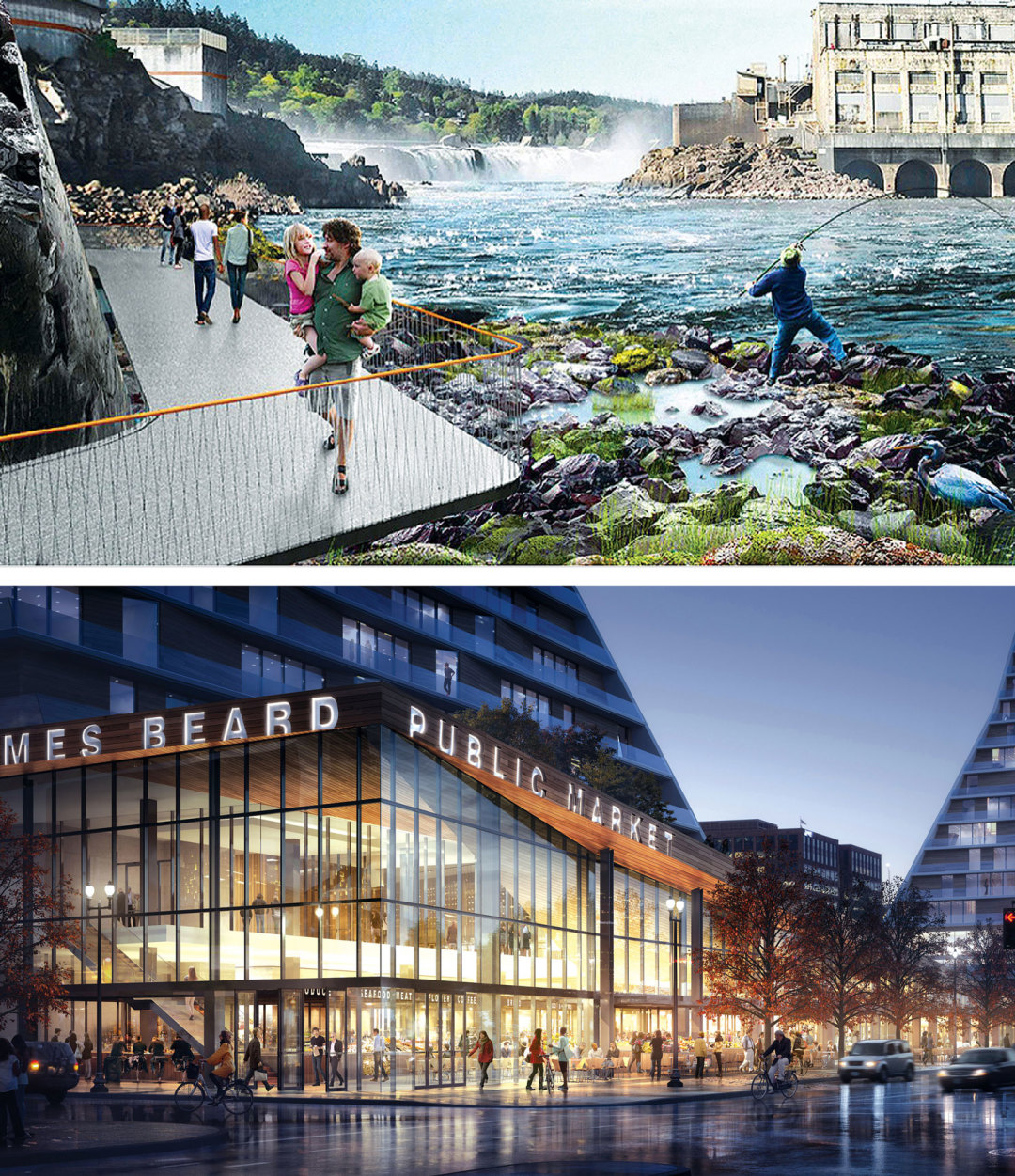The International Designer Behind the James Beard Public Market Goes Chasing Waterfalls

Image: Snohetta
The National September 11 Memorial Museum. The New Library of Alexandria in Egypt. The redesign of public spaces in the chaos of New York’s Times Square. Snøhetta, an Oslo, Norway–based design firm, is renowned for transforming challenging problems into elegant, dynamic spaces embraced by the public. And now the firm is producing visions for two of the highest-profile ideas for the region’s future—a promenade to Oregon City’s Willamette Falls (top) and the James Beard Public Market (bottom).
Both projects have steep challenges: The market is slated for a site beneath and between the western ramps of the Morrison Bridge, and access to Willamette Falls—the largest waterfall by volume in the Pacific Northwest—has been cut off for decades by a 130-year agglomeration of now-defunct industrial buildings.
But Snøhetta has proven that tangled sites can yield transformative results. The firm’s vision for the James Beard Public Market? A food paradise of “medieval streets” lined with small eateries and market stalls beneath 40-foot-high spaces, vaulted by steel trusses echoing the bridge’s structure. Oh, and atop the market, two towers, rising “like sails” on each side of the bridge. If completed, the market would front SW Naito Parkway with more than 700 feet of continuous storefronts featuring fresh food, dramatically altering the loneliest stretch of Waterfront Park.
For Willamette Falls? Wait and see. The actual 18-month design process just began in September, but the falls and the hulking industrial structures are impressive ingredients for the design, says Snøhetta’s project lead, Michele Delk. “There’s also the quality of air, reflections of light, and the presence of sound. Designing with them can really shape the emotional experience of the place.”
Both projects are estimated to cost more than $25 million. The Beard Market has yet to announce any funding. The falls project’s overseer, Metro, has $17.4 million, according to project manager Kathryn Krygier, to get moving with phase one. The question that remains: Can they be realized?




